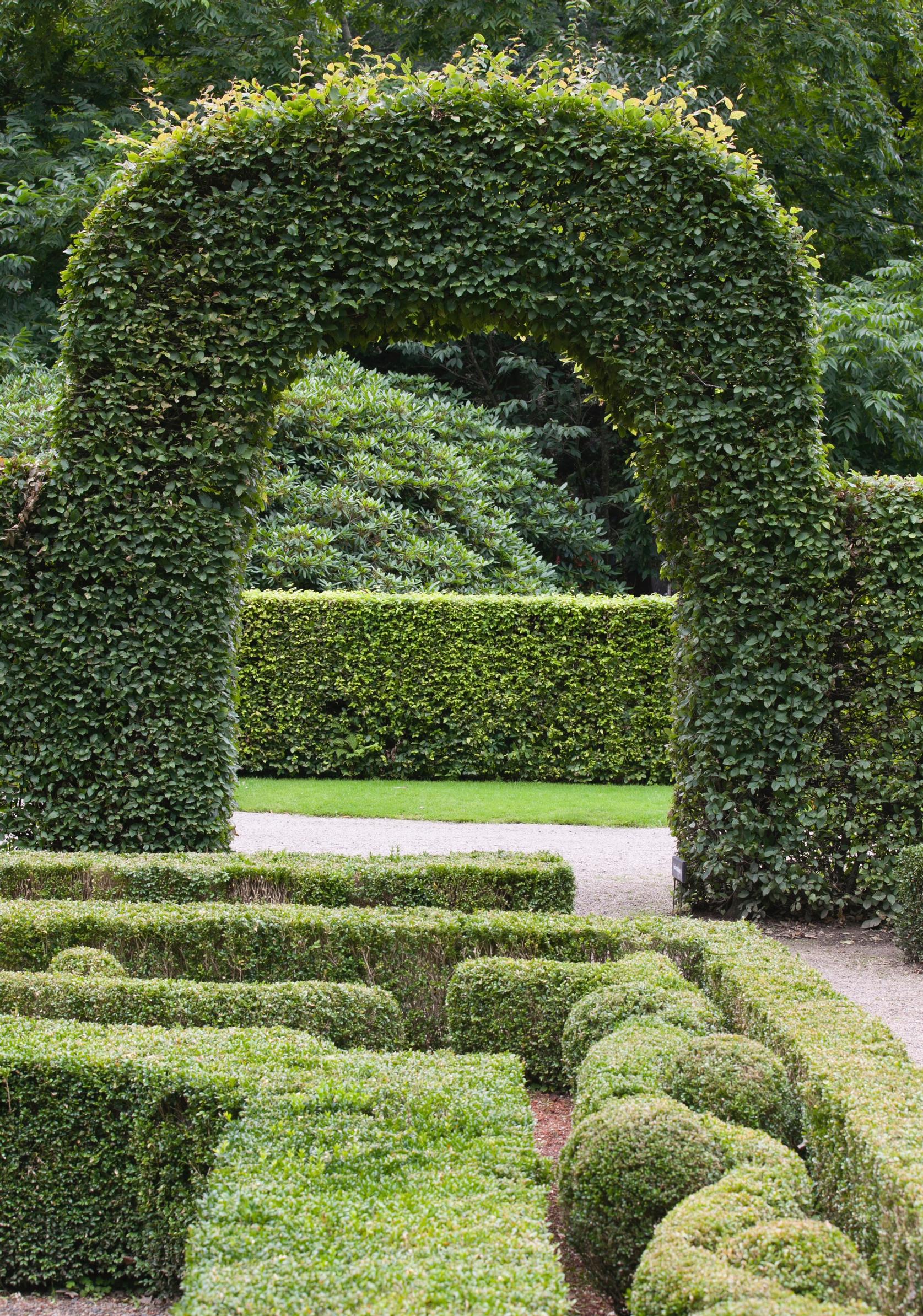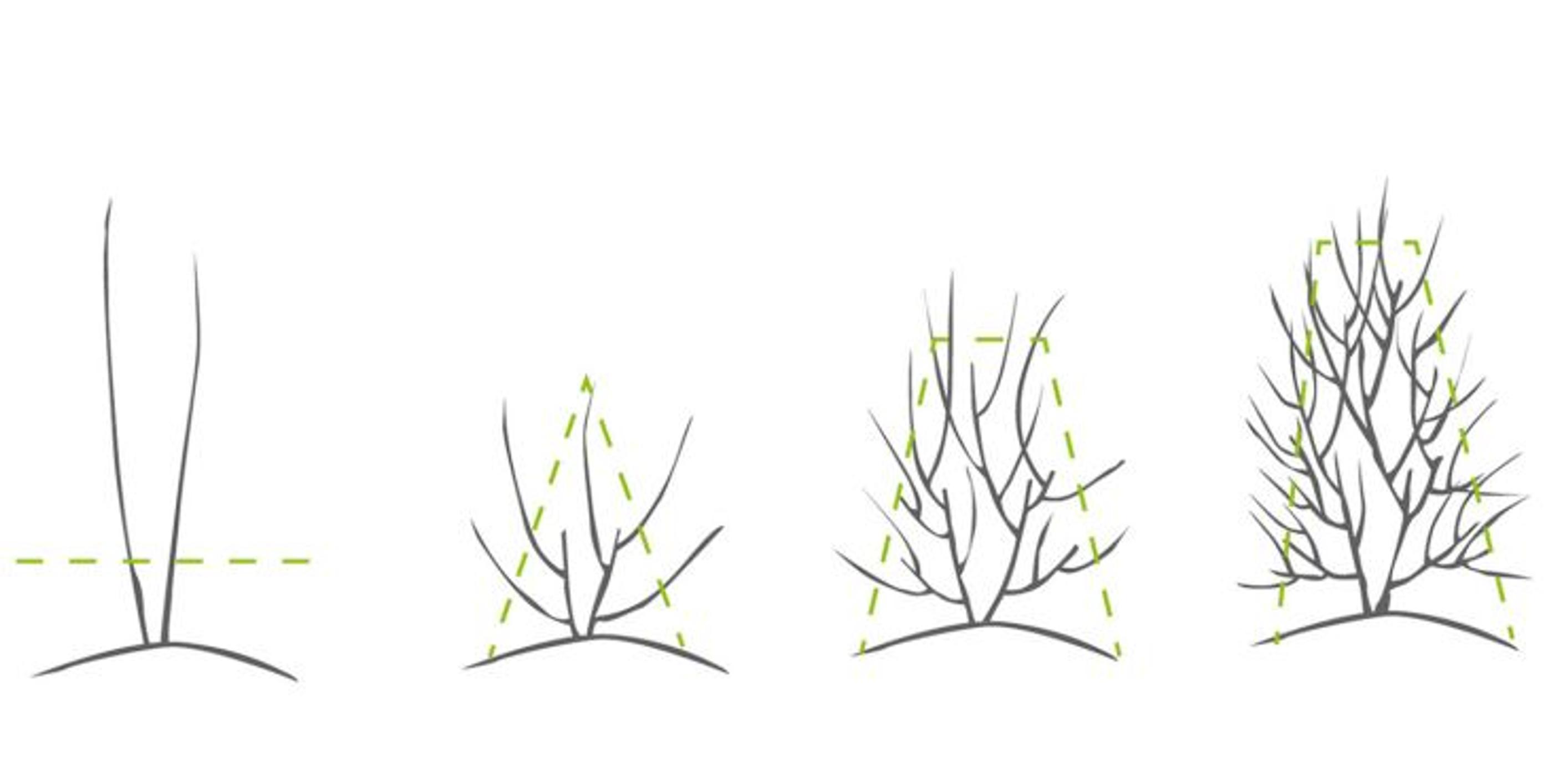
Hawthorn hedge: expert tips for planting, growing, and pruning
Hawthorn is an easy-to-care-for shrub that can be grown into a beautiful hedge. With our expert tips, you’ll succeed in cultivating and pruning your shrubs properly—find all the instructions here!
Growing a hawthorn hedge from hedge saplings
- Create the optimal conditions for your hawthorn hedge by digging a trench half a meter wide and at least 40 centimeters deep for the hedge saplings.
- If the soil is very clayey, lay a drainage pipe at the bottom of the trench to channel away excess water.
- Fill the trench with good-quality garden soil, or to improve the existing soil, mix it half-and-half with garden soil.
- You can plant the hedge using bare-root whips or branched container-grown saplings. Space them 25–35 centimeters apart. Firm the soil well around each plant.
- Water the soil thoroughly and spread bark mulch on top to help retain moisture. However, do not bury small hedge saplings in mulch; instead, apply a thinner layer around the base of each plant.
- If you plant in spring, prune for the first time right away. Cut the whips back to about 10–15 centimeters. If you plant in autumn, wait until the following spring for the first pruning.
- Keep the saplings well watered throughout the summer so they root properly and grow vigorously.
- Hawthorn hedge plants thrive in alkaline conditions, so apply lime each spring according to the package instructions. Give the hedge at least a spring fertilizer each year to ensure plenty of nutrients for lush growth.
Pruning a hawthorn hedge
Pruning a hawthorn hedge during its growth phase
A hawthorn hedge only becomes dense if it’s pruned annually. The same instructions apply to both establishing a young hedge and maintaining an older one.
- During the first few years after planting, prune the hedge every year in early spring before the buds open. Leave 10–20 centimeters of the previous year’s growth at the top. Prune the sides so a few centimeters of last year’s growth remain. From the start, shape the plant so it’s wider at the bottom than at the top. This ensures the hedge stays leafy and dense near the base, since the lower branches also receive light.
- In the same summer, around midsummer, prune the new growth so that only a couple of centimeters remain. If growth is still strong after midsummer, you can tidy up again in July.
- Continue annual pruning following these principles until the hedge reaches the height you want. Shape the top at a slight angle so winter snow won’t weigh down the branches.

Rejuvenating an old hawthorn hedge by pruning
You can rejuvenate a worn-out, old hawthorn hedge with a drastic cutback, but you’ll have to start the regrowth from scratch. Cutting it halfway won’t lead to healthier growth.
- Cut the hedge back to stumps of about 15–20 centimeters in spring, before the buds open.
- Remove any weeds and grass from the base of the hedge. At the same time, apply lime and fertilize the hedge to help it recover from the shock of pruning and encourage strong growth. Finally, add a layer of bark mulch to keep weeds at bay.
- When the hedge starts growing again, follow the pruning instructions for a young hedge.
- Apply lime and fertilizer to your hawthorn hedge each year so the plants have enough nutrients to grow.
Hawthorn hedge vole damage—how to fix it?
Bare, gnawed bases of the hedge indicate that a field vole has been at work. Prune away the damaged sections, as they won’t survive. The root system of a hawthorn hedge is usually strong enough that new growth will sprout even from severely cut sections.


